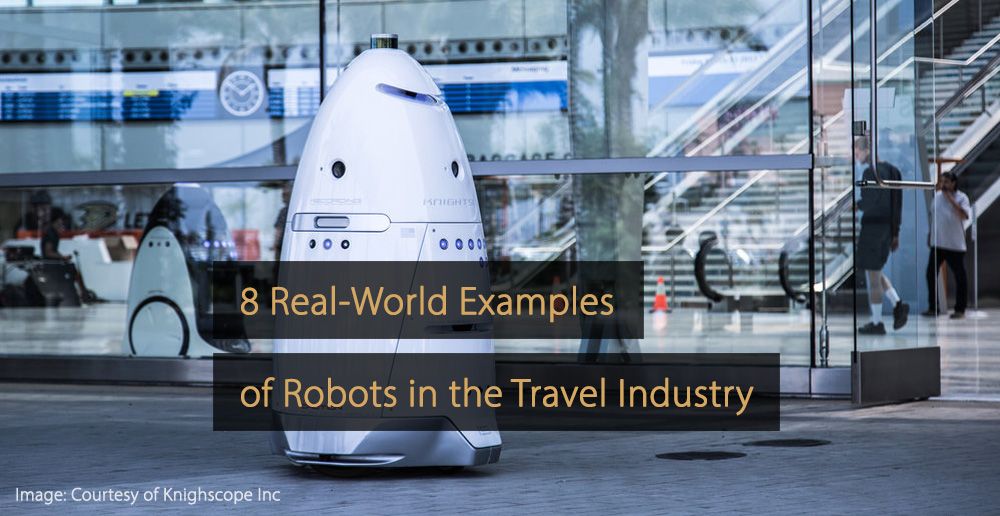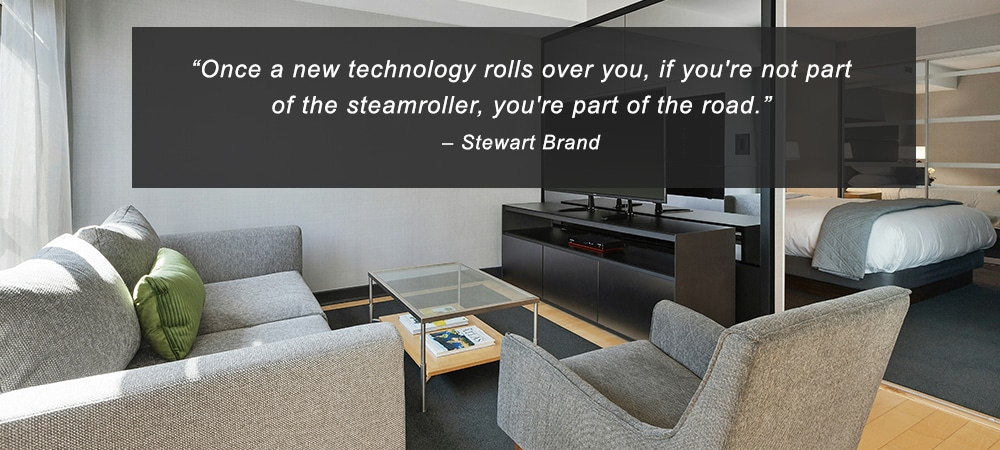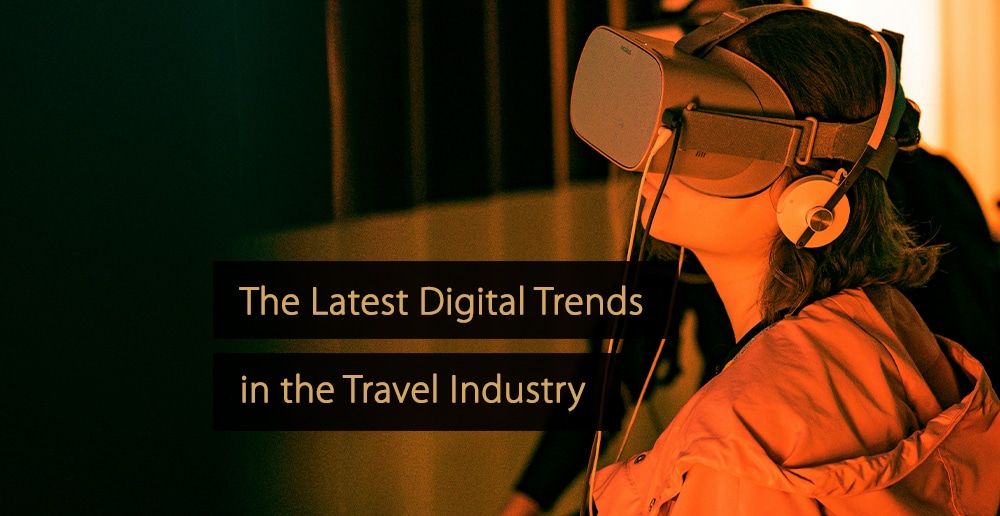One of the most exciting technological developments within the travel industry in recent years has been the increased prevalence of robots, with examples ranging from text-based chatbots and front desk robotic assistants to security robots and robotic travel cases. This article takes a closer look at how robots transform tourism, providing eight real-world examples of their use and examining some pros and cons.
Understanding Robots
Although most of us have a concept of a robot, it can be more difficult to define what ‘robot‘ means clearly. Effectively, a robot is a machine designed to perform specific tasks accurately and automatically. This could include physical tasks, such as part assembly in a factory, or text or speech-related tasks.
In terms of appearance, while you may immediately think of a human-like android, robots can take many different forms in reality. They can be completely autonomous or semi-autonomous, operating with some human assistance. Modern robots use technology ranging from collision detection to speech recognition and artificial intelligence. According to the Robotics Industry Size & Share Analysis Report by Mordor Intelligence, the global robotics market size is projected to reach $95.93 billion by 2029.
For those in the travel industry, AI is perhaps the most exciting robot-related technology because it can facilitate machine learning and perform more complex tasks, which typically require human cognitive function. Put simply, AI is the ability of a machine to mimic this kind of cognitive ability.
Definitions outlining precisely what counts as artificial intelligence are somewhat fluid. Nevertheless, it is usually agreed that speech recognition, problem-solving, learning from human interactions, completely autonomous movement, and the demonstration of logic and reasoning all fall within this field.
Applications Within the Travel Industry
Robotic technology is rapidly gaining popularity within the travel industry, partly motivated by changing consumer habits concerning tourism. Customers increasingly seek self-service methods, making automation robots appeal to hotels, travel agents, and other businesses.
According to the Hospitality Robots Market Report by Zion Market Research, the global hospitality robots market is projected to grow at a CAGR of 25.51% until 2030. Robots provide hospitality companies with several benefits in terms of delivering excellent customer service. For example, chatbots can be made available 24/7, with almost instantaneous response times, which would be virtually impossible for human staff. They can also reduce queue sizes.
Table: Example of Robots Within Travel Industry
| Application Area | Functionality | Benefits |
|---|---|---|
| Customer Service Chatbots | Automated responses to customer inquiries are available through websites or apps. | Provides 24/7 assistance, reducing wait times and increasing customer satisfaction. |
| Check-in/Check-out Robots | Automated kiosks for self-service check-in and check-out in hotels. | Speeds up the process, reduces queues, and allows staff to focus on other tasks. |
| Luggage Handling Robots | Robots that transport luggage to and from rooms or within airports. | Improves efficiency and reduces the physical burden on staff and travelers. |
| Cleaning Robots | Automated machines for cleaning floors, windows, and public areas. | Ensures consistent cleanliness, enhances hygiene, and frees up staff for other duties. |
| Delivery Robots | Robots that deliver items like room service orders directly to guests. | Increases service speed and reduces human-to-human contact, which is important for health safety. |
| Informational Kiosks | Interactive robots provide information, directions, and recommendations. | Offers personalized travel advice and information, improving the guest experience. |
| Security Robots | Robots patrolling premises to detect and report unusual activity. | Enhances security measures and provides real-time surveillance, offering peace of mind. |
8 Real-World Examples of Robots within the travel industry
Eight of the most prominent examples of robots being used in the travel industry are outlined below:
1. A Robot-Staffed Hotel
One of the most exciting examples of robots in the tourism and travel industry comes from Nagasaki in Japan. Here, the Henn-na Hotel is recognized as the world’s first robot-staffed hotel. Robots use voice, facial recognition, and AI technology to operate at the front desk, as customer information points, and for storage purposes.
2. Connie, Hilton’s Robot Concierge
Hilton has deployed robot technology in the form of Connie, an artificially intelligent concierge developed in collaboration with IBM. To respond to their queries, Connie can interact with visitors, using speech recognition technology. It also learns from each interaction, meaning the more it is used, the more its responses will improve.
3. Travelmate: A Robotic Suitcase
Among the most innovative uses of robots within the travel industry so far is Travelmate, a robotic suitcase, which removes the hassle of travel. The suitcase can follow its owner around autonomously, utilizing collision detection technology and 360-degree turning capabilities, removing the need to carry the case.
4. Robot Assistants for Hotels and Airports
Hotels and airports are deploying robotic assistants to fundamentally change the customer experience. Tourists can ask these assistants questions, find out information, and even get them to perform key tasks, like room service. Many of these robotic assistants can also understand and communicate in multiple languages.
5. Robots in Travel Agencies
Another area where robots are being experimented with is within travel agencies, especially to entertain customers at busy times. In this way, the robots can gather important information about what the customer is looking for and then feed it back to a travel agent, improving efficiency.
6. Chatbots for Flight or Hotel Bookings
In much the same way online bookings revolutionized tourism, chatbots have started to do the same. One particularly good example is the SnatchBot Booking Travel Template, which uses AI to guide customers through the booking process, asking intelligent questions along the way.
7. Security Robots for Airports
With a constant need to improve airport security, robots are being deployed in some locations to assist human security staff. For instance, Knightscope robots are used in some airports to detect concealed weapons and other hidden items that are not permitted on flights.
8. Other Examples of Robots in the Travel Industry
Finally, there are a variety of other uses for robots within the travel industry. These include robot luggage porters and butlers, which can navigate hotels and provide valuable customer services, and robots capable of handling check-ins and check-outs, making for a much swifter experience.
Robots vs. Humans: The Pros and Cons
While robots have valid uses within the travel industry, they are controversial to some, and there are pros and cons to be aware of. In general, robots can deliver greater consistency and accuracy than humans and are often quicker than humans, especially regarding calculations.
Unlike human staff members, robots will never get tired or bored and do not require motivation. Additionally, robots do not need to be paid a salary, are not subject to employment regulations, and can be operational 24 hours a day, seven days a week, 365 days a year, without requiring breaks or holidays.
Yet, there are drawbacks, too. An over-reliance on robots could lead to an ‘automation crisis,’ where robots replace humans, leading to a shortage of jobs. Robots cannot adapt to unanticipated events, malfunction, and have high initial and longer-term maintenance costs.
Nonetheless, there are some situations where robots are necessary. A big plus point for using them is their ability to function in dangerous or treacherous environments where people cannot safely work.
Robots in the Travel Industry FAQs
In recent years, robots have become commonplace in the travel industry, providing text-based customer service and more physical interactions. Ultimately, the main benefits are their ability to function 24/7, without needing breaks or motivation, providing greater consistency than humans would be capable of.
Did You Like This Article About Robots in the Travel Industry?
You might also be interested in the following articles:
- How Augmented Reality is Revolutionising the Travel Industry
- How Artificial Intelligence is Changing the Travel Industry
- How Blockchain Technology is Transforming the Travel Industry
- How Virtual Reality is Transforming the Travel Industry
- How the Internet of Things (IoT) can Benefit the Travel Industry
- How Can Voice Control Benefit the Travel Industry?
- Ways Facial Recognition Can Be Used in the Travel Industry
More Tips to Grow Your Business
Revfine.com is the leading knowledge platform for the hospitality and travel industry. Professionals use our insights, strategies, and actionable tips to get inspired, optimize revenue, innovate processes, and improve customer experience.Explore expert advice on management, marketing, revenue management, operations, software, and technology in our dedicated Hotel, Hospitality, and Travel & Tourism categories.
This article is written by:
Hi, I am Martijn Barten, founder of Revfine.com. With 20 years of experience in the hospitality industry, I specialize in optimizing revenue by combining revenue management with marketing strategies. I have successfully developed, implemented, and managed revenue management and marketing strategies for individual properties and multi-property portfolios.










As robots increasingly move from warehouses to shopfronts, embedding Artificial Intelligence (AI) in them will allow retailers to dramatically transform their customer interactions. While a basic sensor-based robot can bring customers what they are looking for, an AI-led robot can offer personalized product recommendations. The robot’s ‘advice’ is invariably driven by analytical insights gleaned by combining data such as customers’ age and location with their purchase histories.
Thank you for sharing this information about robots in the travel industry. Very informative and well-described.
This article about robots in the tourism industry is interesting as all get out. It’s incredible to see how robots are improving the hotel, airport, and cruise ship hospitality industries, thereby changing how we travel. Rapid progress in AI and robotics has led to its application in various contexts, including customer service, concierge work, and housekeeping. However, it makes one wonder about the future of human employment in the sector. It will be interesting to see how this technology develops and how it affects the way we travel in the future.